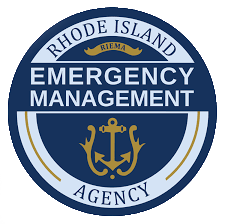Hurricanes
According to the National Hurricane Center:
"A tropical cyclone is a rotating, organized system of clouds and thunderstorms that originates over tropical or subtropical waters and has a closed low-level circulation." They are classified as follows:
- Tropical Depression: A tropical cyclone with maximum sustained winds of 38 mph (33 knots) or less.
- Tropical Storm: A tropical cyclone with maximum sustained winds of 39 to 73 mph (34 to 63 knots).
- Hurricane: A tropical cyclone with maximum sustained winds of 74 mph (64 knots) or higher.
- Major Hurricane: A tropical cyclone with maximum sustained winds of 111 mph (96 knots) or higher, corresponding to a Category 3-5 on the Saffir-Simpson Hurricane Wind Scale.
The Atlantic Hurricane seasons lasts from June 1st to November 30th and peak season for tropical storm systems in the North-Atlantic is late August - September.
Hurricane Preparedness
When preparing for hurricane season the needs of all members of a household should be considered. If a household includes a young child, senior citizen or a person with a disability or severe illness, special steps to assist them may be necessary and should be incorporated into all emergency planning. Pets require special handling as well, especially since most shelters do not accept animals.
Hurricanes can produce storm surges of water along the coastline, high winds, tornadoes, heavy rains and flooding. In some hurricanes, wind alone can cause a lot of damage such as downed trees and power lines, collapsing weak areas of homes, businesses or other buildings. Roads and bridges can be washed away and homes can be ruined by flood waters.
Some common information to help prepare for hurricane season is to Make a Kit, Make a Plan and Stay Informed. For tips on being prepared before, during, and after a hurricane, download our Hurricane Preparedness Guide.
Rhode Island Hurricanes
The following is a list of hurricanes that have directly affected the State of Rhode Island
- Great Colonial Hurricane of 1635
- 1815 Hurricane
- Great New England Hurricane of 1938
- Hurricane Carol, 1954
- Hurricane Edna, 1954
- Hurricane Gloria, 1985
- Hurricane Bob, 1991
- Hurricane Irene, 2011
- Hurricane Sandy, 2012
Hurricane Categories
The table below provides more information about the 5 categories in the Saffir-Simpson scale, which is used to describe the strength of a hurricane. The table includes the wind speeds and likely damage impacts for a hurricane in each category.
